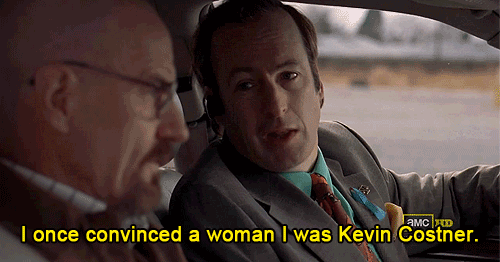5 TV Shows for Nerds Who Care About Scientific Accuracy
I know it’s going to be a massive surprise, but some television shows take some liberties with science and wind up with something that would definitely get you an F in Biology. However, other shows go the extra mile to study up on real scientific theories and implement them accurately into their series. I’m not saying the shows on this list are 100% plausible all of the time, but these five series won't disappoint if you're a nerd for scientific accuracy.
Breaking Bad
If you've been living under a rock, Breaking Bad was an award-winning hit from AMC about a high school chemistry teacher who gets cancer and doesn’t have enough money to pay for treatment. What’s his first logical fundraising step? Making meth, of course. Breaking Bad, with its deep roots in chemistry, uses a lot of science in each episode—I mean the velocity of that pizza. Dang.
While everything about the series isn’t 100% accurate, it references real-life chemicals and compounds, such as fulminated mercury, hydrofluoric acid, and phosphine gas, that help the main characters out of jams more than once. Breaking Bad creators and writers took steps to use real science and the truth behind the drug business, although there are times you wonder if there are easier ways to get cancer treated.
 (There is no scientific explanation for this.)
(There is no scientific explanation for this.)
Bones
First of all, it’s important to note that while Bones is a scientific show, it does focus heavily on relationships as well, so buckle up for some serious character development. If that's not your thing, keep moving.
There are a lot of times when Bones was far less than accurate, but other times they were spot on with science. For example, their use of forensic anthropology to identify victims and the methods employed to solve a case do justice to science. Naturally, the series accelerates the process of finding the answer to each mystery, but all-in-all, it is pretty accurate.
 (Physics being put to good use.)
(Physics being put to good use.)
Dr. Who
For a show that refers to time as “wibbly wobbly timey wimey,” the theories put forth by Dr. Who aren’t too off from real science. Of course the show takes a lot of liberties along the way, but here’s the low-down.
Everyone remembers the 3rd series episode “Blink.” For the uninitiated, this episode introduces the Weeping Angels, one of Dr. Who‘s most iconic and terrifying villains. When unobserved, these nightmare fuel baddies can travel long distances very quickly in order to stalk their prey. However, the moment someone lays an eye on them, they turn to stone, completely frozen in place.
Sound ridiculous? Well actually, this concept has its basis in the Copenhagen Interpretation of quantum mechanics. The Weeping Angels are, in essence,“quantum-locked” and can only move when they aren’t observed. While quantum scientists are unlikely to stumble upon anything remotely like this in the real world, you've got to give Dr. Who an A for effort at least.
 (Must have missed that day in science class.)
(Must have missed that day in science class.)
Star Trek
Star Trek is one of the greatest science fiction shows ever created, but it can’t possibly be accurate, right? Well, you’d be surprised to know that the original producer of the show, Gene Roddenberry, tried to keep the show as scientifically accurate as he could.
For example, no one wants to watch a show about a crew traveling for decades to reach stars, so he implemented a warp drive that distorted the space-time continuum. That’s stretching the truth, right? Well, actually the idea was originally conceived by Einstein and Alcubierre.
The technology used in the show is also incredibly accurate, despite being decades old. The communicators used are eerily like cellphones that we use today. Sending videos, pictures, and verbal reports while moving around may have seemed impossible in the 70s, but can you imagine leaving your house without your mobile phone now? These are just a couple of ways that Star Trek lived long and prospered for decades.
 (Objectively, quantifiably creepy)
(Objectively, quantifiably creepy)
Fringe
Fringe seems to cram science into every second of the show, but it’s about more than just facts and numbers. Sometimes the twists and turns can cross over into impossible, but the executive story editors, Glen Whitman and Rob Chiappetta, work hard to keep things as accurate as they can while keeping it interesting as well.
Whitman and Chiappetta have been known to contact real scientists, like they did for the season three finale. The pair reached out to physicist Sean M. Carroll to talk about wormholes and radiation conundrums. Carroll worked with the writers to create a story that was plausible, despite the fact that the plot for this episode involved a wormhole in Central Park.
 (Hey, it's technically chemistry.)
(Hey, it's technically chemistry.)
Don't forget to like The Essential BS on Facebook. Seriously. Don't forget.











